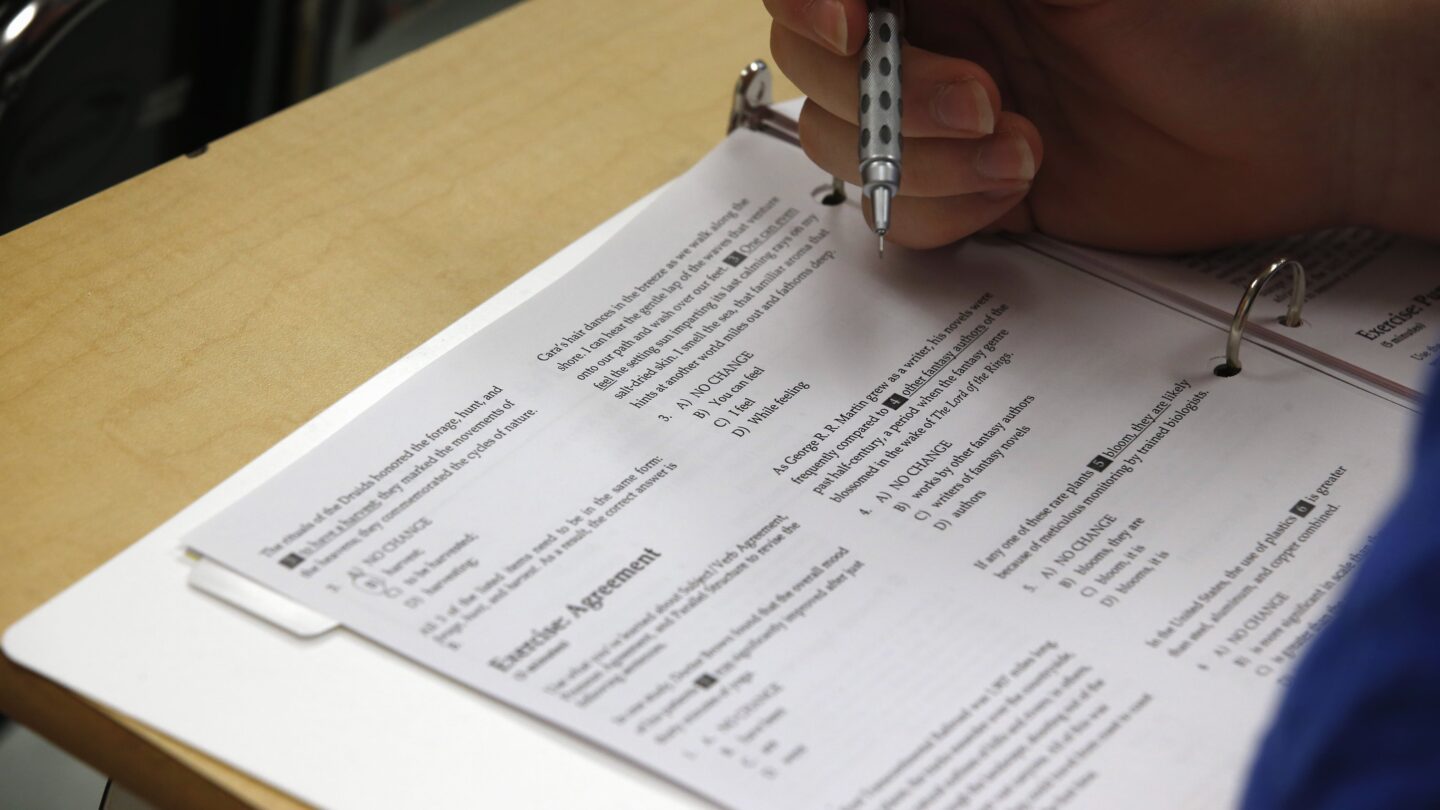The SAT, a college admissions exam long associated with paper and pencil, will soon go all-digital.
Starting in 2023 for international students and in 2024 in the U.S., the new digital SAT will shrink from three hours to two, include shorter reading passages and allow students to use a calculator on the math section.
Testing will still take place at a test center or at a school, but students will be able to choose between using their own devices — including a tablet or a laptop — or the schools’ devices.
“The digital SAT will be easier to take, easier to give, and more relevant,” said Priscilla Rodriguez of the College Board, the organization behind the test.
“With input from educators and students, we are adapting to ensure we continue to meet their evolving needs.”
The College Board previously scrapped plans to offer an at-home digital test because of concern about students being able to access three hours of uninterrupted internet and power. Student broadband access has been a constant struggle throughout the pandemic, especially in rural and low-income areas. The new SAT will be designed to autosave, so students won’t lose work or time while they reconnect.
All this comes as the relevance of the SAT and ACT, another college entrance exam, is being called into question in the college admissions process. More than 1,800 U.S. colleges are not requiring a test score for students applying to enroll in fall 2022, according to the National Center for Fair & Open Testing. At least 1,400 of those schools have extended their test policies through at least the fall of 2023. The University of California system, one of the largest in the nation, permanently removed the tests from its admissions process in November, after a drawn-out debate and a lawsuit.
Still, the SAT and ACT are deeply ingrained in the American high school experience. More than a dozen states require one of the exams to graduate, and before the pandemic 10 states and Washington, D.C., had contracts with the College Board to offer the test during the school day for free to their students.
With the college admissions process grabbing headlines, and the Supreme Court agreeing to revisit the use of affirmative action in admissions, the College Board maintains that the SAT plays “a vital role in holistic admissions.”
And despite many colleges making the test optional, some students see value in it.
“[The test] definitely doesn’t offer the full profile of who a student is, it’s not like the missing piece,” explains Kirsten Amematsro, a junior at Potomac High School in Dumfries, Va. “But it can make your application better. It just kind of speaks to what you can accomplish in your testing ability.”
Amematsro first started thinking about her path to college — and taking the SAT — back in sixth grade. When she got to high school, her mom bought her a poster of a college readiness to-do list that hangs in her bedroom.
“I know that it’s going to be a vital part when I apply [to college],” she says. She thinks with so many colleges going test-optional, having a good SAT will be “a cherry on top” of her application.
Last fall, Amematsro took a pilot version of the new digital SAT.
“It felt more streamlined,” she says. “It’s just not as easy for me, honestly, to focus on the paper as it was the computer.”
She used her own laptop to take it, which felt comfortable and familiar.
“I just feel like it’s easier for our generation because we’re so used to using technology.”
Before this new digital format, the SAT had already gone through several changes. In 2014, the College Board revealed it would drop its penalty-for-wrong-answers policy, make the essay portion optional and remove the obscure vocabulary section. And in early 2021, the organization announced it would discontinue the optional essay component of the SAT, as well as the subject tests in U.S. history, languages and math, among other topics.
Copyright 2022 NPR. To see more, visit https://www.npr.org.
9(MDAxODM0MDY4MDEyMTY4NDA3MzI3YjkzMw004))

9(MDAxODM0MDY4MDEyMTY4NDA3MzI3YjkzMw004))








